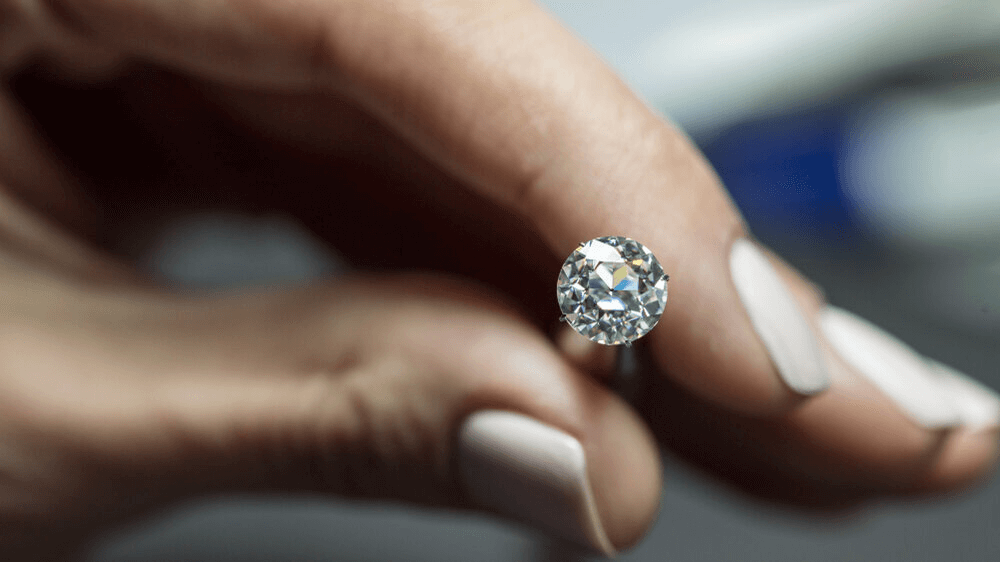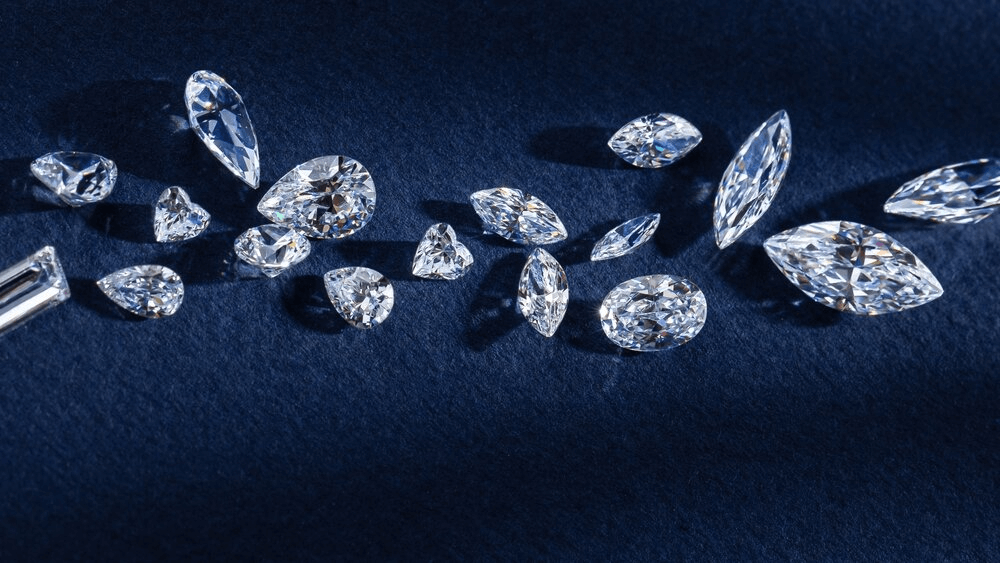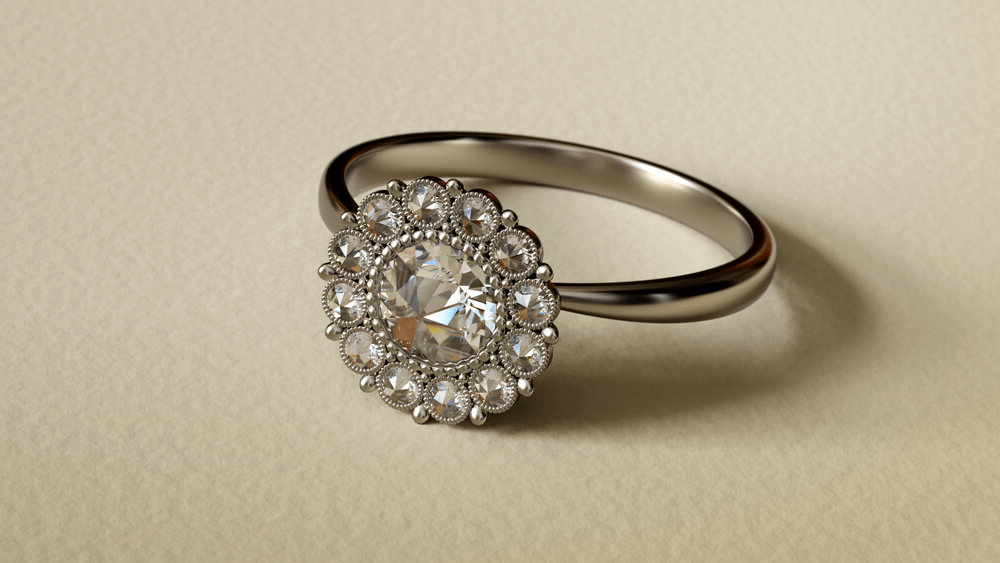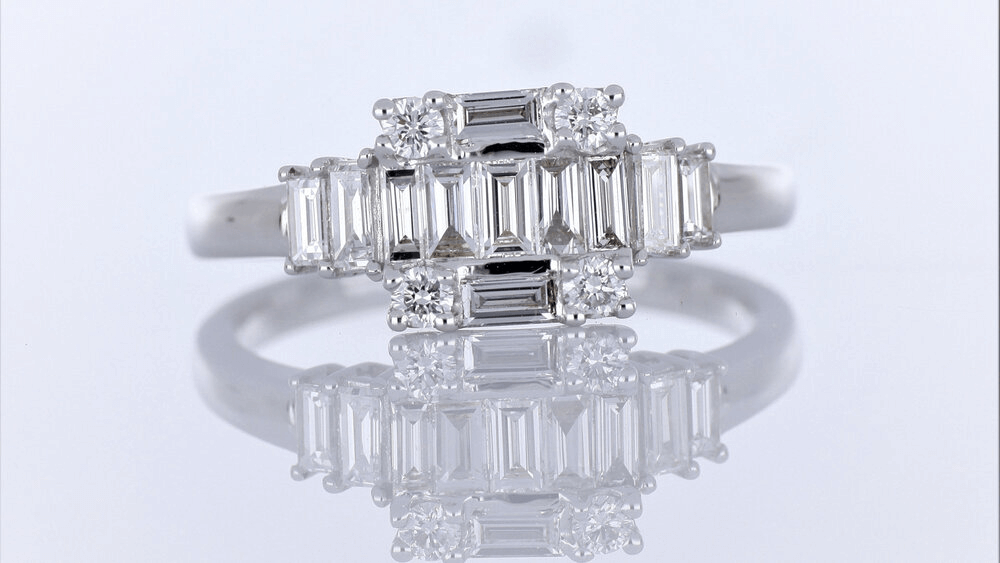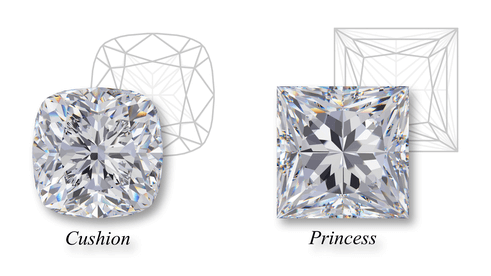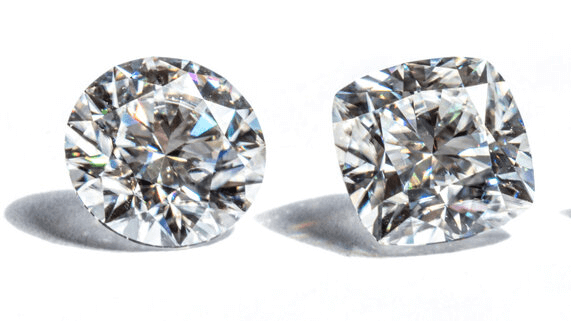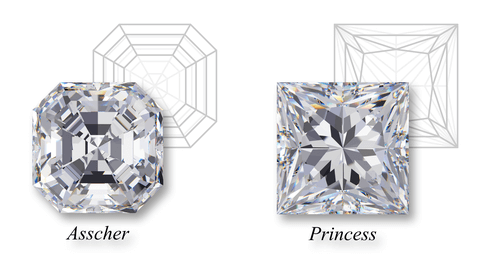The Pros and Cons of Different Diamond Shapes!

By Gary A.

Edited by Olivia H.
Published Jul 5, 2022
Edited on Dec 18, 2024
When selecting a diamond, understanding the unique qualities of different diamond shapes is key to finding one that perfectly reflects your style and personality.

- 6 Quick Considerations for Diamond Shapes
- Introduction to Diamond Shapes
- The Allure of Popular Diamond Shapes
- Choosing a Diamond Shape
- Our Expert Take
- 10 FAQs
Before we dive deeper into the specifics, here are some practical tips to help guide your decision-making process:
6 Quick Considerations for Diamond Shapes
When selecting a diamond engagement ring, focusing on the shape of the diamond is crucial. Here are some practical tips to guide you in making an informed choice about diamond shapes.
- Tip 1: Understanding Proportions and Symmetry Proportions Matter: Look for shapes that have well-balanced proportions. This is especially important for shapes like the Marquise, Oval, and Pear, where disproportion can lead to an uneven appearance. Symmetry is Key: Ensure that the diamond’s shape is symmetrical. An asymmetrical diamond can affect the stone’s overall brilliance and aesthetic appeal.
- Tip 2: Considering the Ring Setting Match with Setting: Choose a diamond shape that complements the ring setting. For example, a Round Brilliant might suit a classic setting, while an Emerald cut might be more suited to a modern, geometric setting. Protection for Pointed Shapes: If you opt for shapes with points (like Marquise or Pear), ensure the setting protects these vulnerable areas to prevent chipping.
- Tip 3: Size and Finger Shape Considerations Visual Size Impact: Remember that certain shapes can appear larger. Oval, Marquise, and Pear shapes can look more prominent than a Round Brilliant of the same carat weight. Complementing the Finger: Consider how the shape will look on the wearer’s finger. Elongated shapes can make short fingers look more slender.
- Tip 4: Evaluating Light Performance and Cut Quality Brilliance and Fire: Examine how light plays through the diamond. Shapes like Round Brilliant are known for high brilliance, while Step cuts like Emerald have a subtler, more elegant light reflection. Cut Quality: Ensure the diamond’s cut is of high quality, as it significantly impacts the stone’s sparkle, regardless of its shape.
- Tip 5: Analyzing Color and Clarity in Different Shapes Color Perception: Some shapes, like the Round Brilliant, can mask color better than others. In elongated shapes, color may be more perceptible at the ends. Clarity Insights: Step cuts like Emerald and Asscher can make inclusions more visible, requiring higher clarity grades for an eye-clean appearance.
- Tip 6: Understanding Shape-Specific Characteristics Unique Features: Familiarize yourself with the unique characteristics of each shape. For instance, the Bowtie effect is common in Oval and Marquise cuts and may not be desirable. Personal Preference: Ultimately, choose a shape that resonates personally. Whether it’s the traditional elegance of the Round cut or the unique charm of a Cushion cut, the shape should reflect the wearer’s style.
Now that you’ve got these practical tips, use Jeweler AI below to find the perfect engagement ring that suits your style and budget:
Introduction to Diamond Shapes
Yes, the chances are that, by now, you’re at least aware of the fact that the Four Cs are going to rule your diamond-shopping experience. The idea that you could just stumble across the ideal diamond without even trying is quickly fading, and being replaced by the cold hard fact that, really, finding the best diamond shape possible for you means understanding what makes a diamond shape more suitable than the rest.
So, it’s all about logic, research, ratios, and percentages from here on out, right? Wrong.
Fortunately, while there’s plenty of practical boxes to tick, there’s still a lot of room for creativity, especially with the diamond shape you choose.
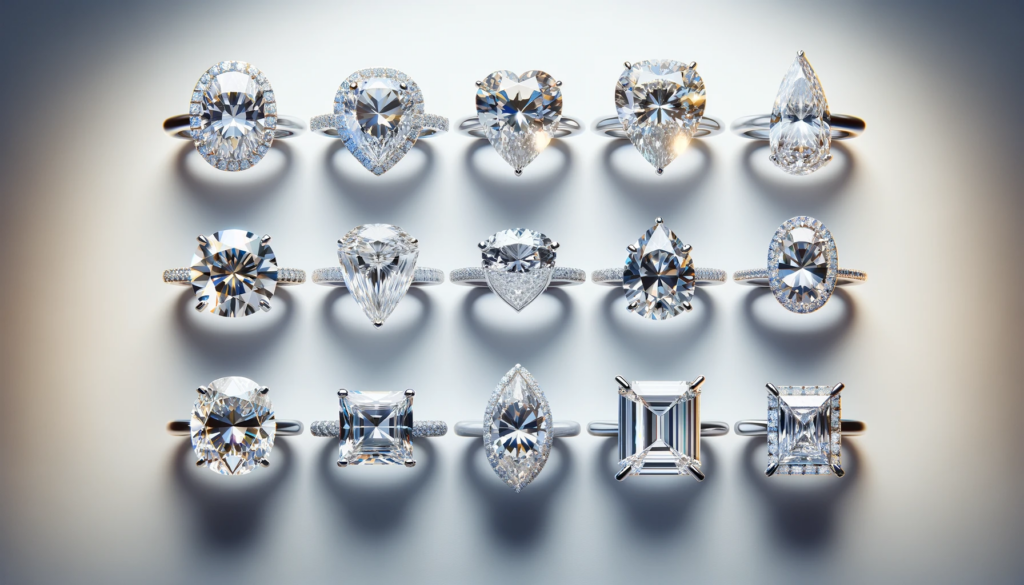
Introduction to Diamond Shapes
When it comes to your diamond’s shape – the silhouette it creates on its own, and after it has been placed within your ring setting – it’s all about finding that one, perfect style to suit your future bride, and understanding how to turn it into the engagement ring of her dreams.
The Difference Between Cut and Shape
Cut refers to the quality of the diamond’s proportions, symmetry, and polish, and is totally different from shape. Both represent highly important considerations for anyone considering investing into a diamond for the first time.
Two diamonds, both featuring the same shape, can have totally different Cut grades.
Of all the Four Cs, diamond cut is inarguably the most important. Those two diamonds we mentioned above with have totally different appearances and light performances, simply because one is cut better than the other.
A poor cut can ruin a diamond’s sparkle, and make it look noticeably low in quality – even when it’s been set within a beautiful and exquisitely made ring design – so keep in mind the importance of differentiating between capital-c ‘Cut’, and the various diamond shapes (sometimes referred to as cuts) that are out there.
At WillYou, part of our 11-step QA process to ensure a high diamond standard for all our customers involves checking that each one falls within ‘ideal proportions’. The ideal is different for every shape, and any diamond that falls outside of that ideal is simply not good enough for our customers.
Why Shape Matters
It’s the first thing anyone will notice when they set eyes on her engagement ring, as well as determining how much it will sparkle, and whether or not it suits her style. It’s not something you want to guess at, wing, or overlook during your search.
If you’ve spent any amount of time researching engagement rings, we’re willing to bet that you’ve already got the importance of the Four Cs sitting front and center in your mind. This is, of course, just as it should be – but, alongside ensuring a great quality diamond, you also need to ensure that that great quality diamond looks right for its intended wearer.
This Emerald Cut Cathedral Ring perfectly captures the understated, elegant beauty of the cut, and would be the perfect choice for someone with a more laid-back style. Then again, while its more modest sparkle and paired-back design would represent the perfect choice for some, the polar opposite would be true for another. This Princess Cut Pavé Ring in Rose Gold is totally different in every respect, and a perfect choice for someone who would prize the romantic color, the glitter of the pavé and the star-like sparkle of the cut.
In short, shape matters a whole lot, and needs to be carefully weighed up against everything else as you begin designing your engagement ring.
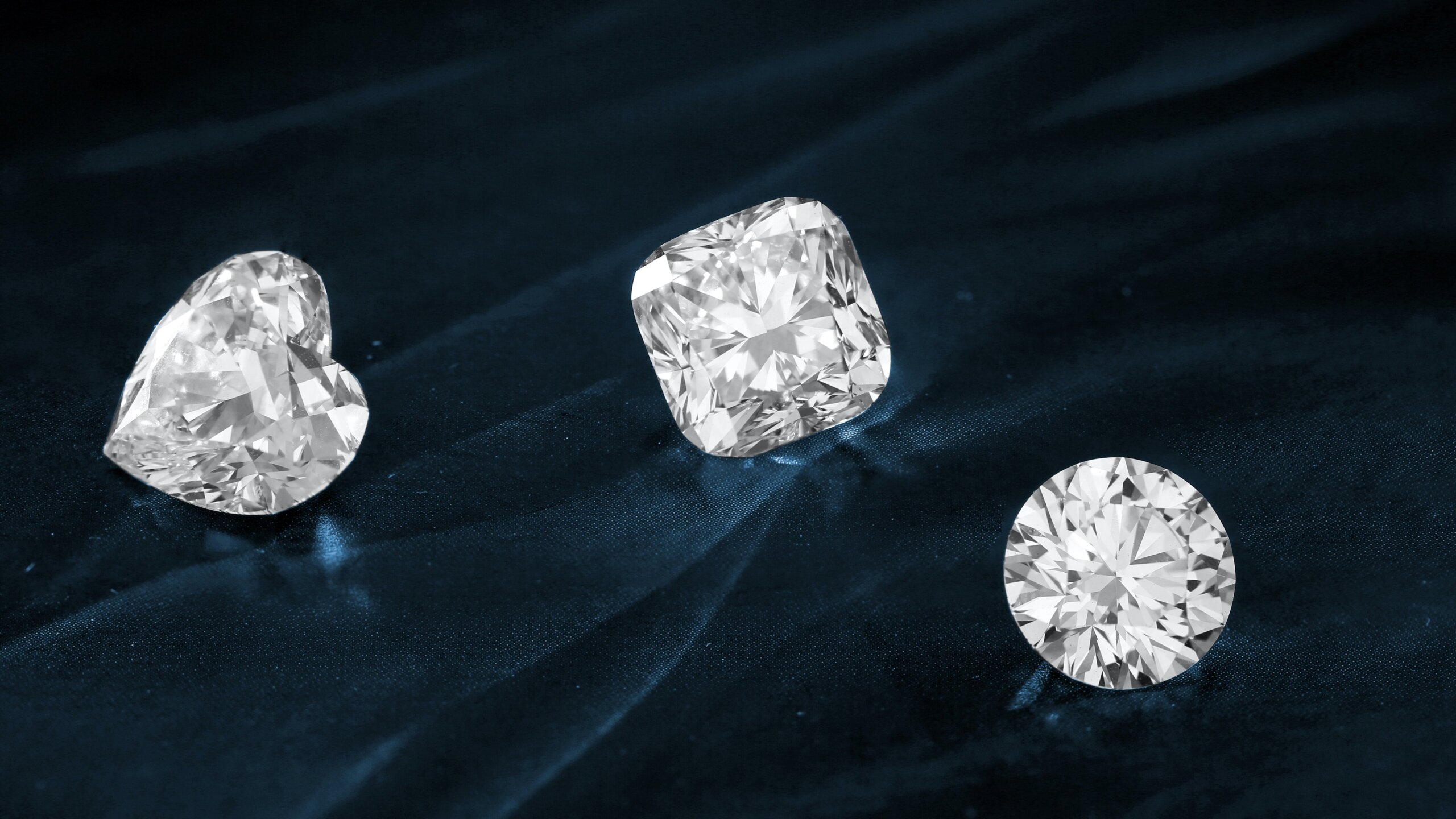
The Allure of Popular Diamond Shapes
Diamonds can be cut into practically any shape, although, these days, only around 8-10 prove popular among modern shoppers.
Throughout history, diamonds have been cut into countless shapes. Some of these shapes are still popular today, others have been reworked and perfected over the years – including, of course, the Round – while others have been lost to the sands of time.
As you do your research on diamonds and diamond jewelry, you’re pretty unlikely to come across a Mine cut, or a Rose cut. These are just two examples of styles that proved popular in the past but, nowadays, have been surpassed by other, more brilliant cuts.
Some cuts, like the trilliant (a triangle) enjoy a pretty modest amount of popularity, with the following nine shapes stealing the hearts of most shoppers these days.
Round Brilliant: The TImeless Choice
Also referred to as the ‘Round Brilliant’, this cut is likely the first thing that pops into your head when you think of diamond engagement rings. While a round cut has been in existence since the 17th century, the version we know today was not created until the 20th century.
Featuring 57 facets (58 if the diamond is given a culet), this diamond is known for its incredible sparkle – and, very occasionally, a stunning hearts and arrows effect.
As Seen On: Recently, Jenna Ushkowitz demonstrated how timeless the classic Round cut solitaire really is.
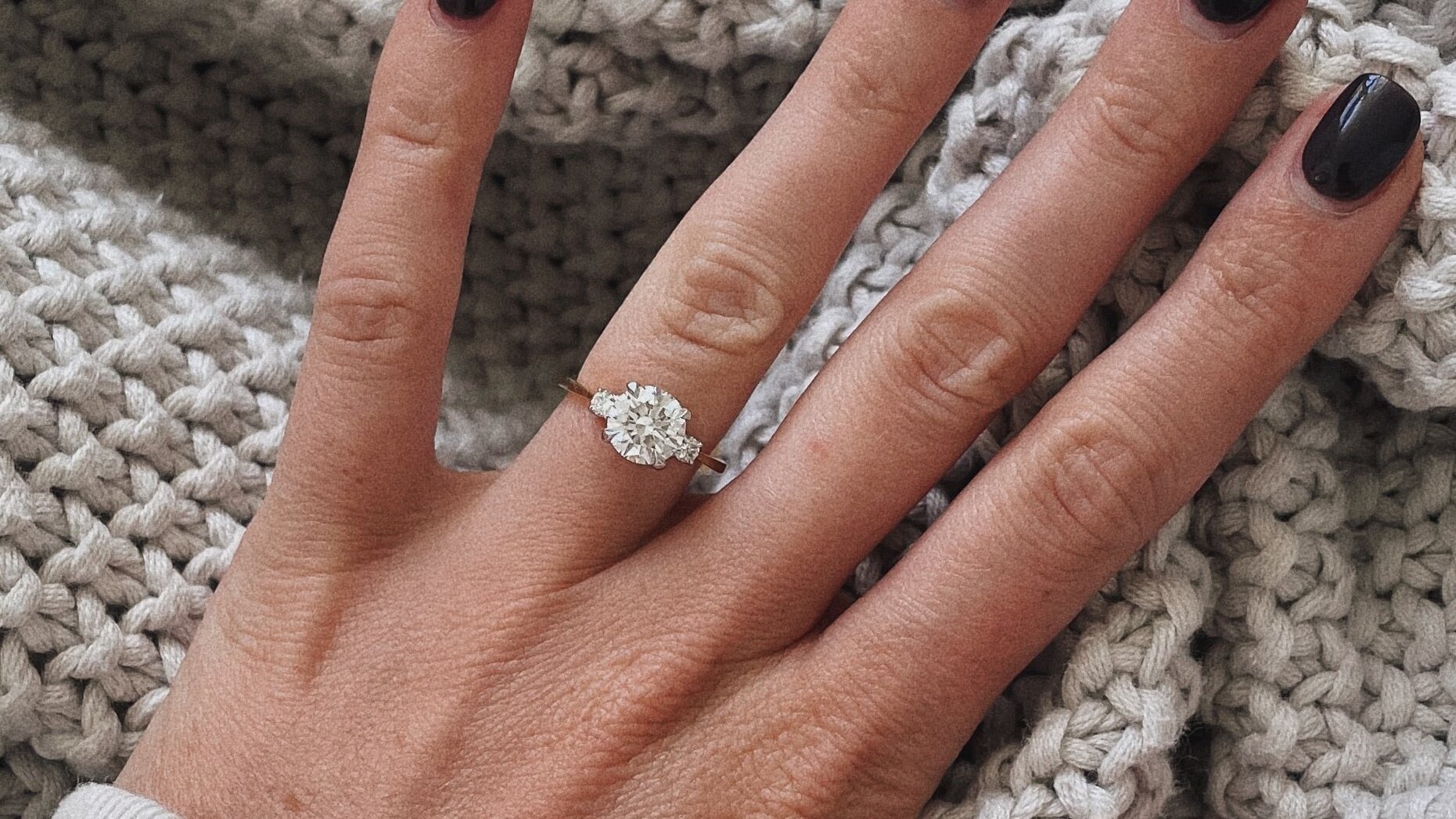
Oval and Marquise: Elongated Elegance
The Oval is a classic and highly versatile shape that often appears a little larger than the Round, even at the exact same carat weight. Like the Round, it’s a ‘brilliant cut’ – more on that below – which means that it gives a similar amount of fire, brilliance, and scintillation.
While it can look just as classic and traditional as the Round, this shape is also no stranger to a more modern twist.
Dainty, sparkling and perhaps the most elegant shape on this list, the Marquise cut was originally designed to resemble a pair of lips. It is characterized by two sharp points which typically follow the vertical line of the finger, although this shape can be set East-West like the Pear.
It’s not the most common shape in the world of diamond jewelry – and particularly as the center stone of a ring design – but, whether on its own or flanked by accent stones, the Marquise can look out-of-this world as an engagement ring.
As Seen On: Blake Lively wears a highly traditional Oval set on a pavé band. But, among the best celebrity engagement rings of 2020, Ariana Grande’s contemporary Oval diamond and pearl combo demonstrates how ‘out there’ such a traditional shape can be. Victoria Beckham is thought to have been given fifteen engagement rings over the course of her relationship, but the very first was a striking Marquise solitaire.
Princess Cut: Modern Elegance
A much newer cut than some of the others on this list, the Princess cut was created back in the mid-twentieth century. What makes this cut particularly interesting is the fact that it uses the facet pattern of the brilliant cuts (like the Round and Oval) within a square silhouette.
The effect is a highly decadent sparkle, and an elegant, geometric shape that puts a modern spin on the traditional engagement ring. Even the name has its own appeal – particularly those with highly feminine styles.
As Seen On: Katrina Bowden, who wears a Princess cut diamond nestled between two smaller stones, and a sparkly channel-set shank.
Emerald and Asscher Cuts: Art Deco Sophistication
The Emerald cut is the first shape on this list featuring straight sides. Rectangular in shape, and featuring beveled corners, the elongated facets on this shape represent the ‘step cut’, rather than the brilliant.
While it’s not quite as popular as the Round and Oval, the Emerald remains a common sight in engagement rings. Elegant and vintage, it’s still a classic – if not the classic – choice for popping the question with.
As Seen On: Princess Grace Kelly of Monaco made history in the silver screen with a 10.4 carat Emerald and, more recently, the style was brought back to the forefront by Beyoncé, who wears an 18 carat diamond on a split shank.
Like the Emerald, the facets of the Asscher cut are arranged totally differently to the other styles on this list. Typically square in shape, with beveled corners, the Asscher exemplifies the stunning ‘hall of mirrors’ effect that appears when you stare through the head of this elegant diamond.
As Seen On: British socialite Pippa Middleton wears an Asscher in the center of her engagement ring, surrounded by a bezel halo for even more sparkle.
Cushion Cut: Vintage Romance
We mentioned the (now defunct) Old Mine cut above, and the Cushion represents the modern ‘reinvention’ of this old style. The diamond follows a brilliant facet pattern, and sits halfway between square and round, as a result of its softened corners.
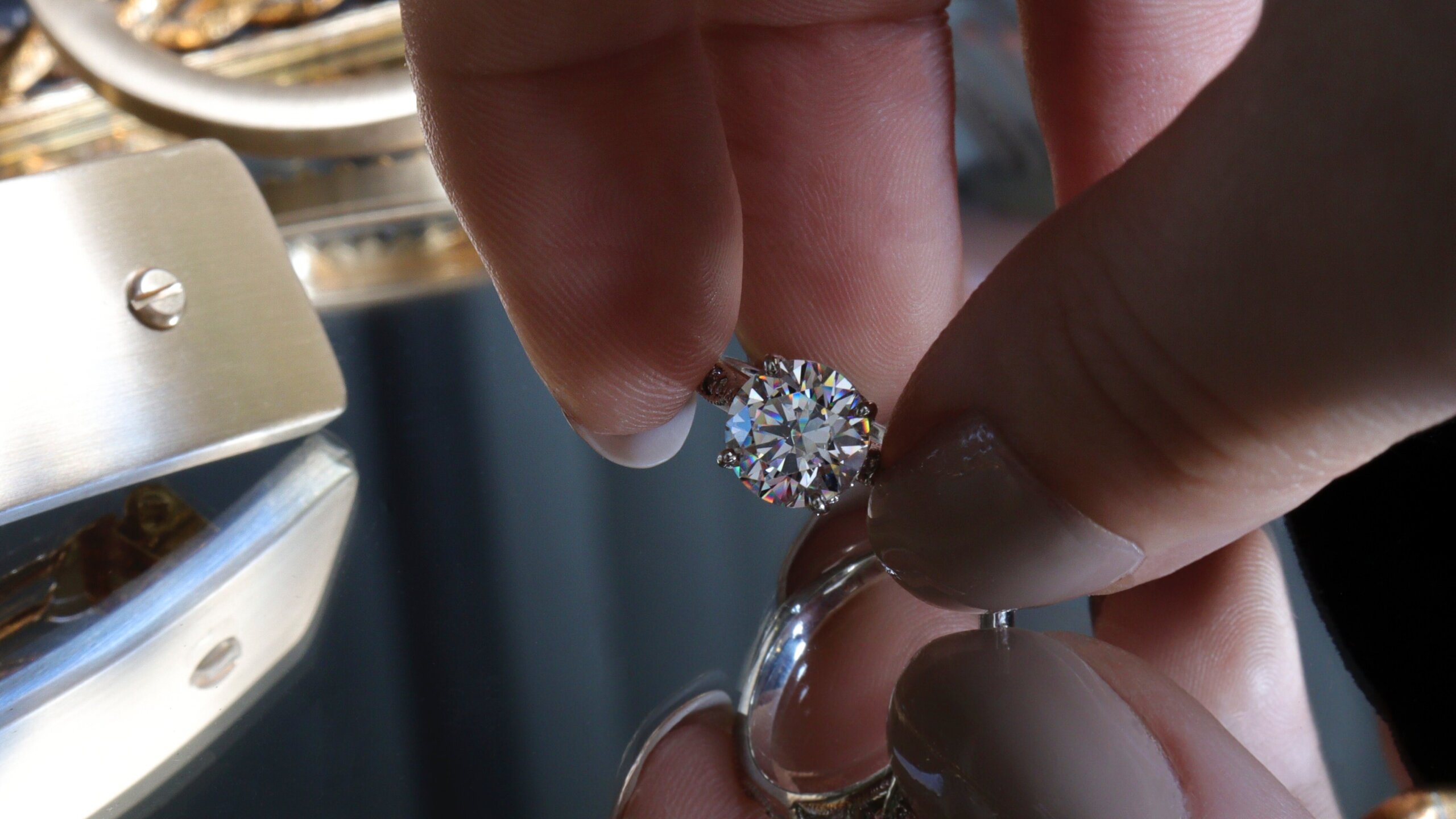
With a bright sparkle and a softer, gentler shape than the Princess and Radiant, the Cushion is pretty popular among modern brides-to-be. It’s also great at holding color, which makes things a little harder for those looking at clear diamonds, but also makes it a very popular choice for anyone interested in fancy color diamond engagement rings.
As Seen On: Gabriel Union’s ring demonstrates the exceptional beauty of the Cushion cut diamond in a solitaire setting, while Sofia Vergara’s is complemented by a subtle halo of accent diamonds.
Pear Cut: the Edgy choice
A shape that combines the Round and the Marquise cuts, the Pear is also known as the ‘Teardrop’ (think tears of happiness and not the alternative here…)
The Pear is pretty versatile, as it can be worn pointing up, down, or cast sideways (East-West) on the shank for the ultimate asymmetric statement. Worn vertically, however, the Pear can be highly flattering, as its elongated shape can make the wearer’s finger appear longer.
As Seen On: Emily Ratajkowski’s unique Pear and Princess pairing demonstrates the drama this shape can bring to a ring. It’s certainly not for everyone, and Katherine Heigl’s ring demonstrates the simple beauty of the Pear cut.
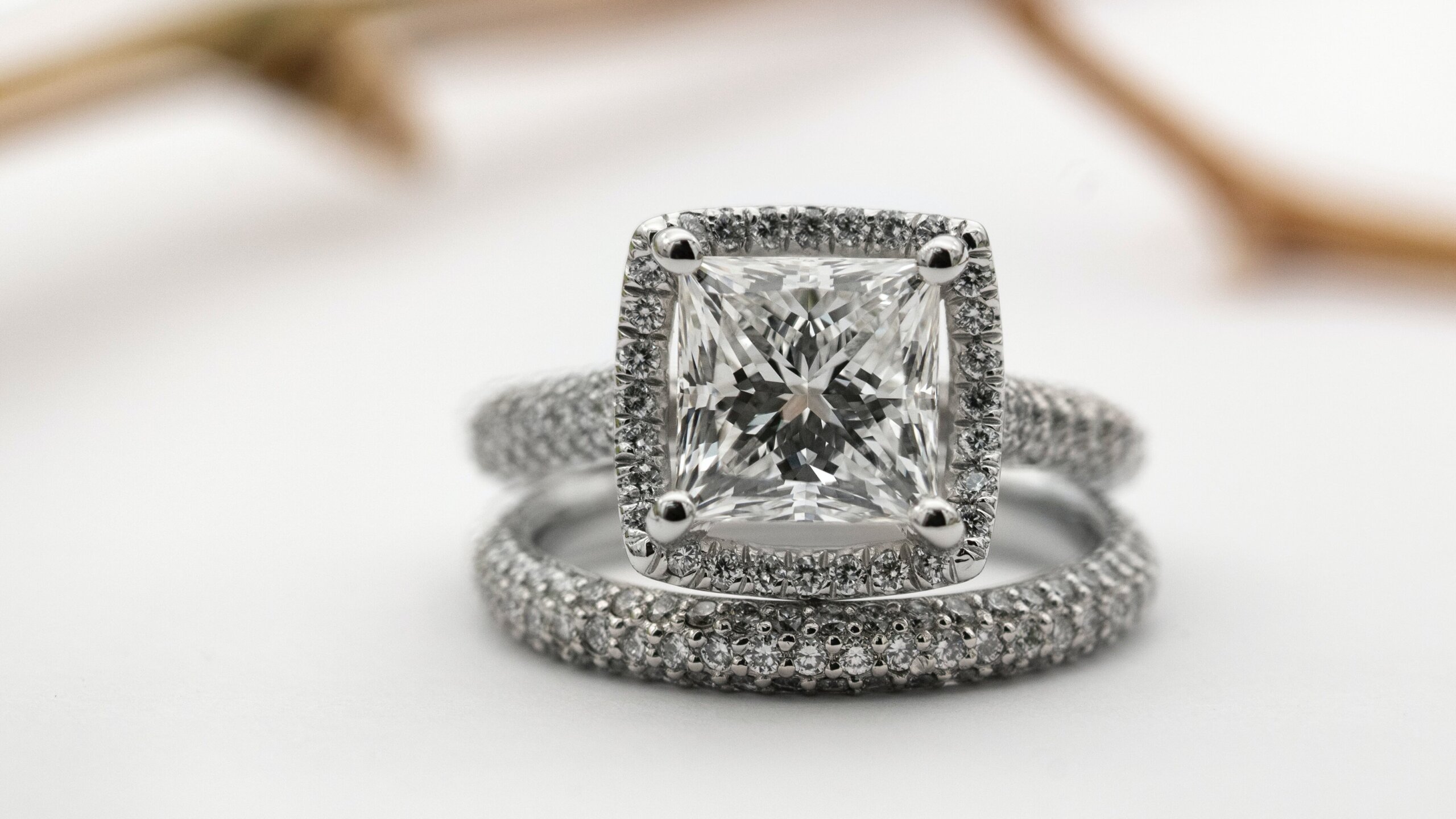
Radiant Cut: The Brilliant Choice
Occasionally confused with the Princess cut, the Radiant incorporates the brilliant facet pattern within a highly geometric shape. Like the Emerald, its corners are beveled to create more strength and a bold silhouette, although, given their totally different levels of sparkle, you won’t be getting them confused.
As Seen On: Clare Crawley, who wears a 4.5 carat Radiant cut diamond, suitably adorned with more than a hundred pavé diamonds along the shank.
Heart Cut: The Romantic Choice
As the name suggests, this shape appeals to the true romantics at heart. For all its (obvious) connotations, however, this shape remains a much less common sight in engagement jewelry than many of the other cuts on this list.
As Seen On: Lady Gaga, who wore the unique diamond shape on a simple pavé band.
Choosing a Diamond Shape
So, you know the basics. What you don’t know, however, is which one is going to end up on the ring finger of your future bride. There’s a lot to consider – and plenty of questions to get answered – before you can make up your mind once and for all.
Which Diamond Shape Looks the Biggest?
The Oval, or the super elongated Marquise and Pear shapes, tend to look bigger than other shapes featuring the same carat weight. The same goes for the Emerald, though to a slightly lesser extent, and the rectangular Radiant.
This is definitely something to keep in mind when you’re browsing – the fact that some diamond shapes carry more weight in their surface, whether others are naturally deeper. This is known as the cut’s weight distribution, and has a pretty significant bearing on what the diamond looks like when it’s directly compared against other diamonds
And, while the Round has plenty of things going in its favor, a strikingly large surface area isn’t one of them. That award goes instead to the shapes that require more weight to be focused into length, whether the shape is naturally rounder – like the Oval – or rectangular – like the Emerald.
Shapes with more even dimensions, like the square Cushion, tend to look smaller in comparison, as a larger portion of weight is held in its depth – and, of course, generally hidden within the ring setting.
The Most Popular Diamond Shape
The Round’s unbroken streak as the most popular cut for engagement rings means that, in all likelihood, this is the shape you have encountered (and will continue to encounter) the most.
How common a diamond cut is, however, shouldn’t sway you one way or the other. While the Round is by far the most popular, it’s not going to burn itself out like any regular trend, so don’t avoid it on that basis alone.
Still, don’t make the mistake of following the pack for the sake of it. Keep your mind open to other shapes that may appeal to your bride-to-be’s unique tastes even more than the Round.
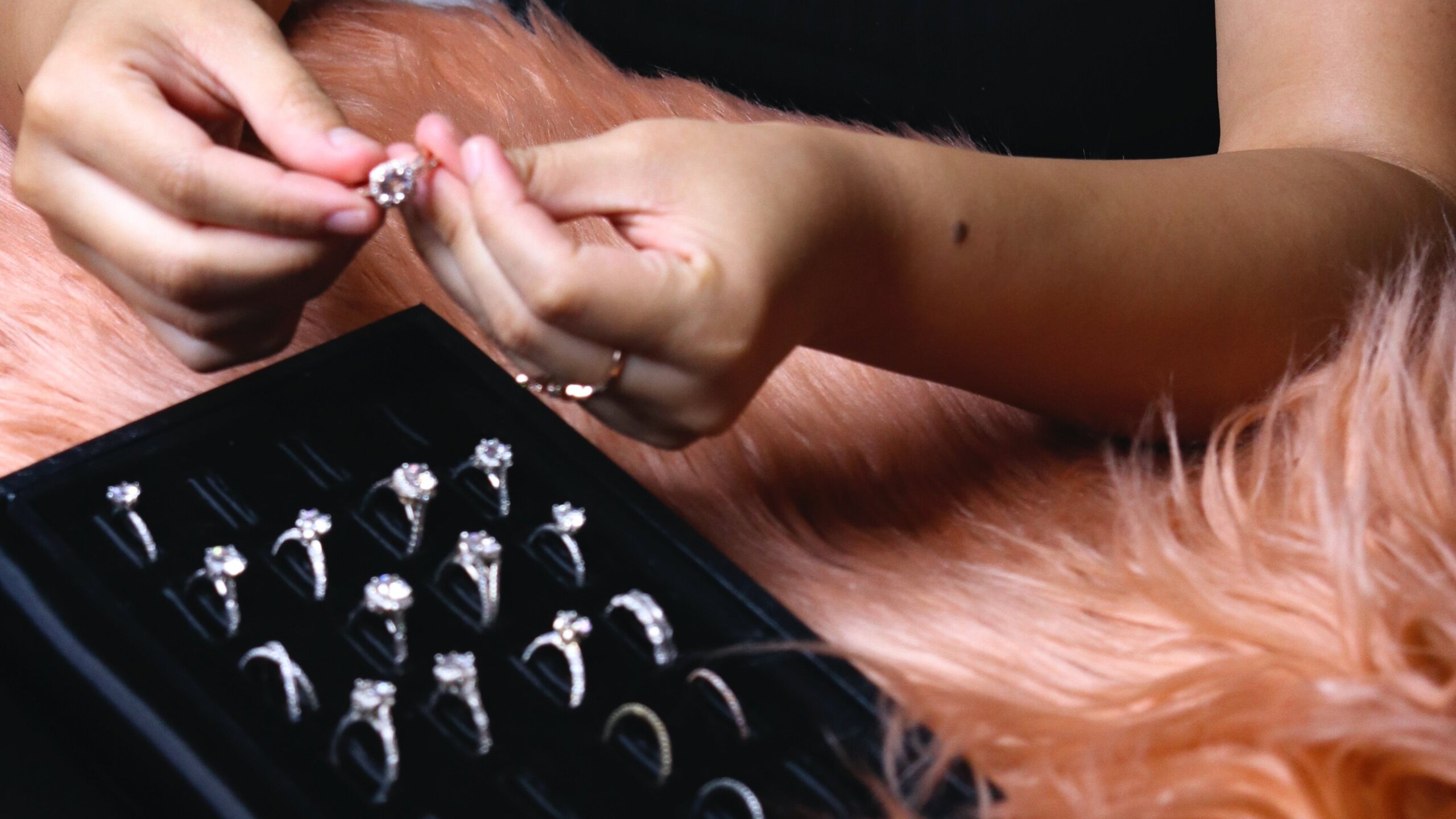
The Least Popular Shape
While every shape will enjoy at least some time in the sun every few years, the Heart tends to come out at the bottom of most people’s lists.
There are plenty of possible reasons behind this. First off, engagement rings are romantic and heart-stopping enough on their own, without the more heavy-handed imagery brought by the (perhaps overly)distinctive heart shape. This particular shape often works better for pendants or earrings, rather than diamond engagement rings.
Another significant reason that could directly influence the Heart’s lack of popularity is how difficult it is to create a beautifully proportioned cut. All too often, Heart diamonds can appear too wide, too narrow, too long or too stout – and, in a shape as recognizable as this one, it’s all too obvious to even the untrained eye when a Heart diamond has been poorly cut.
The Sparkliest Shape
The Round Brilliant sparkles produces more fire, brilliance, and scintillation than any other diamond shape – provided, of course, that it has been cut to a high standard.
It’s not always easy to figure out the difference between shape and cut when you first start looking at diamonds, but the key thing to note is the fact that, while the ‘right’ and ‘wrong’ shape comes down to personal preference, cut does not.
For any diamond shape, even if it is the incredibly sparkly Round Brilliant, a cut grade of Excellent or Very Good should be treated as an essential. Diamonds with lower cut grades will be considerably cheaper, but, unlike clarity and color, cut does not represent an area you want to save money on.
So, the longer answer to this question is as follows: a Round Brilliant with a high GIA cut grade (either Excellent or Very Good) sparkles the most.
The Most Durable Shape
Diamond shapes without sharp points, including the Round, Cushion, Emerald, and Oval, tend to be a little more durable than others.
Diamond is an incredibly tough substance, but it’s not totally immune to damage. The right setting will support and protect any diamond – whatever its shape – from potential damage, but the sharp points found on shapes like the Marquise, Heart and Princess are more vulnerable to breaking, chipping, or snagging than the softer corners of the shapes mentioned above.
Interestingly, this is why some diamonds are still cut with a slight culet, despite the fact that it’s an undesirable extra facet. It’s there to offer some additional protection to the stone while it is being set within the ring, although, these days, it’s not considered necessary by most jewelers.
While durability is an important consideration – especially if your bride-to-be leads a pretty active lifestyle – it’s not a reason to totally write-off a shape just yet. On our online store, you will able to find the right ring setting to keep your preferred diamond safe from the knocks and scrapes of everyday wear, giving you the peace of mind you need.
The Most Meaningful Diamond Shape
The Pear and Marquise cuts both carry a lot of meaning, although in totally different ways. Then again, all engagement rings automatically take on more meaning than any other piece of jewelry – that is, until she puts on her wedding band for the first time – so don’t force yourself to commit to a shape just because of its meaning.
If you’re a fan of the backstory, then reading into the history of the Marquise cut might just be enough for you to give this elegant shape a shot. What may at first appear to be an elongated oval is in fact an impression of King Louis XV’s romantic interest at the time – or, more specifically, her ‘perfectly shaped’ mouth.
Alternatively, the fact that the Pear is frequently seen as a symbol for tears of happiness is a great way to inject even more meaning into your engagement ring’s design.
The Most Romantic Shape
That depends on your definition of ‘romance’.If you’re more traditional, then we’d argue that the Round Cut’s history as the epitome of love and commitment would make it by far the most romantic choice for your future bride.
If you prefer to take things a little more literally, then the Heart cut can’t really be beat – for obvious reasons – although this is a very difficult cut to perfect, so you may end up paying a premium for an Excellent cut grade.
If you’re a fan of a great anecdote, then the Marquise cut offers a truly romantic backstory. Created to resemble his paramour’s lips, King Louis XV first commissioned this shape back in eighteenth-century France.
Then again, nothing proves your love for your partner more than having that innate ability to create something that truly appeals to their tastes, which means that any diamond shape can be romantic provided you’re willing to put in the legwork to figure out which one is best for you.
How to Pick a Shape (and Not Regret it)
Research where to shop
Fortunately for you, you’ve started in the right place. The only way to feel sure that you’re making the best possible decision is to know what’s available in the first place.
It’s easy enough to simply go online and pick a beautiful ring, but it’s even more fulfilling to understand the finer details of shape, cut, clarity, color and, of course, what stands out to you.
This is where online buying – provided you choose a reputable online seller – is going to prove so useful for anyone looking to invest in a diamond engagement ring. Not only do you have the ability to take your time and buy within the comfort of your own home, but you have all the guides you could need to make the perfect decision.
Think About Her Style
Every diamond shape carries its own vibe, from vintage to modern, ornate to understated, intentionally bulky to sleek and smooth. Obviously, some shapes are more versatile than others – all it takes is a change of setting to take an Emerald diamond from ‘Great Gatsby’ to totally modern and minimalistic.
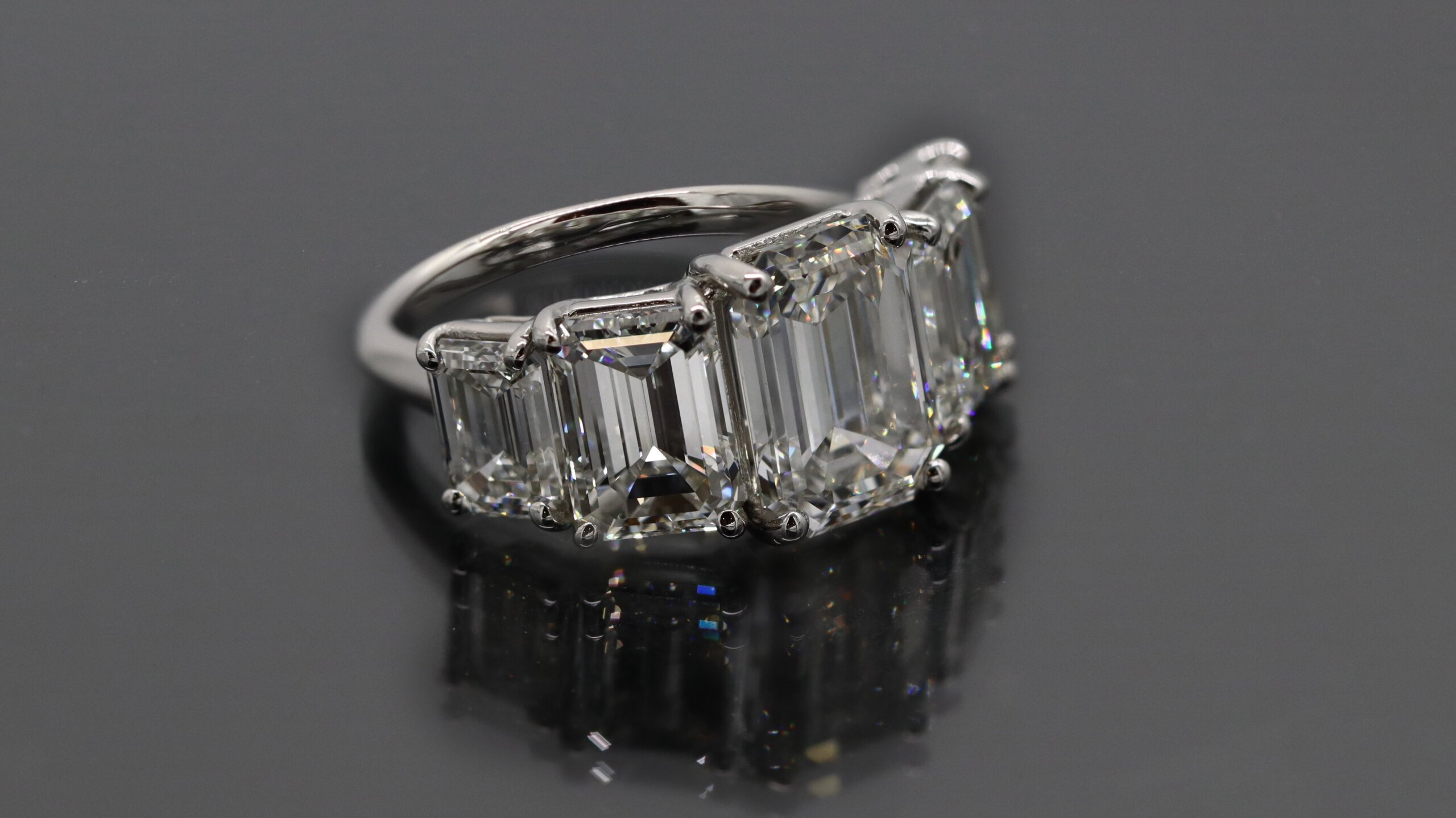
With that in mind, this step might just be about whittling down your options to a subcategory. For instance, you can start by asking yourself if Round Brilliant is the way to go. As the most popular shape out there, it pays to decide early on whether or not you’ll be going for it.
After that, ask yourself whether she would lean towards the Modified Brilliant cuts, or the Step Cuts. If it’s the latter, then your job is going to be way easier; for the former, however, the modified brilliants represent the largest category of shapes, and you’ll need to do a little more work before you find the right one.
Some people like to think about what will flatter the wearer, and tend to lean toward elongated shapes which can appear to ‘lengthen’ the finger. With that said, however, a beautiful diamond will always flatter whatever finger it is placed on, and it’s far more important to suit your diamond to your partner’s style, rather than the shape of her finger.
Research Engagement Ring Settings
As you know, the diamond doesn’t exist in isolation, and, as we talked about above, a particular setting style can totally transform the look of a diamond.
Take a look at this stunningly simple Round Solitaire Engagement Ring in Platinum. The full beauty of the diamond is on display here, and the high level of brilliance offered by the cut is complimented by the almost luminescent quality only platinum is able to bring to the table.
Next, look at this Marquise Solitaire in Platinum. The only difference is the diamond shape, but the effect is totally different, with the Marquise lending the design a bold yet elegant appearance that is a little more unique than the traditional Round solitaire.
Next, look at this Marquise Halo Ring in Yellow Gold, which creates a totally different impression yet again. The addition of the halo and half pavé shank brings out the opulent qualities of this modified brilliant, as well as making it appear a little bigger, and the contrasting colors between the diamond and the band reflect through the stone beautifully.
What we’re trying to say is this: While the diamond is without a doubt the headline feature of any engagement ring, the design of the setting and shank can totally transform a diamond into something truly special. All of our rings are designed exclusively by A.Jaffe, a jewelry maker with over 130 years experience, meaning the setting can – and will – be just as beautiful as the diamond. It’s important, therefore, that you keep that in mind and don’t think about the diamond in isolation.
Our Expert Take
If you’re going by popularity alone, the Round Brilliant is the clear winner. With more sparkle than any other shape, and a versatile shape that will look at-home (and totally timeless) in any ring design, it’s a strong choice for anyone. That said, there is no universal ‘best’ shape – only the best one for you and your future bride.
One of the most important things to remember is the fact that, while it’s possible to narrow your list of choices down to just one or two, committing to one design over all the rest is going to feel a little like feeling your way in the dark. Nevertheless, with our help, you can be sure you’ll get a truly stunning design to propose with.
So, which diamond shape is the best? The one that grabs your attention, dazzles you with its unique combination of brilliance and fire, and makes it possible for you to imagine the completed ring design – not only as it will look in the box, but as it will look when you finally get to place it on her finger.
10 FAQs
- Q: What Diamond Shape Looks the Biggest?
A: Elongated shapes like the Oval, Marquise, and Pear often appear larger than a Round Brilliant of the same carat weight due to their extended surface area. - Q: Which Diamond Shape is the Most Popular?
A: As of recent trends, the Round Brilliant remains the most popular due to its exceptional brilliance and timeless appeal. - Q: What is the Least Popular Diamond Shape?
A: The Heart shape tends to be less popular than other shapes due to its unique and specific look. - Q: Which Diamond Shape Sparkles the Most?
A: The Round Brilliant cut is renowned for its maximum sparkle and fire, thanks to its high number of facets and symmetrical shape. - Q: What Are the Best Diamond Shapes for Engagement Rings?
A: Round Brilliant, Princess, Oval, and Cushion cuts are among the most popular for engagement rings, offering a mix of brilliance and unique aesthetics. - Q: How Does Diamond Shape Affect Price?
A: Certain shapes like Round Brilliant tend to be more expensive due to higher demand and more wastage during cutting. Shapes like Oval or Marquise might offer more value for the same carat weight. - Q: Does Diamond Shape Reflect Personality?
A: Yes, diamond shapes can reflect personal style and personality. For instance, Round Brilliants are classic and traditional, while Marquise or Pear shapes might appeal to those with a taste for uniqueness. - Q: Which Diamond Shape is Best for Short Fingers?
A: Elongated shapes such as Oval, Marquise, or Emerald can make short fingers appear longer and more slender. - Q: What is the Difference Between Diamond Shape and Cut?
A: Diamond shape refers to the stone’s overall form (like Round, Oval, etc.), while cut refers to how well the diamond has been crafted and faceted from its rough form. - Q: Can Diamond Shape Hide Flaws?
A: Yes, certain shapes like Round Brilliant can mask color and inclusions better than others, such as Emerald or Asscher cuts.
Explore the elegance of diamond shapes with Jeweler AI. Find your perfect match in style, size, and brilliance. Click to begin your journey!
FOLLOW-UP GUIDE SERIES

